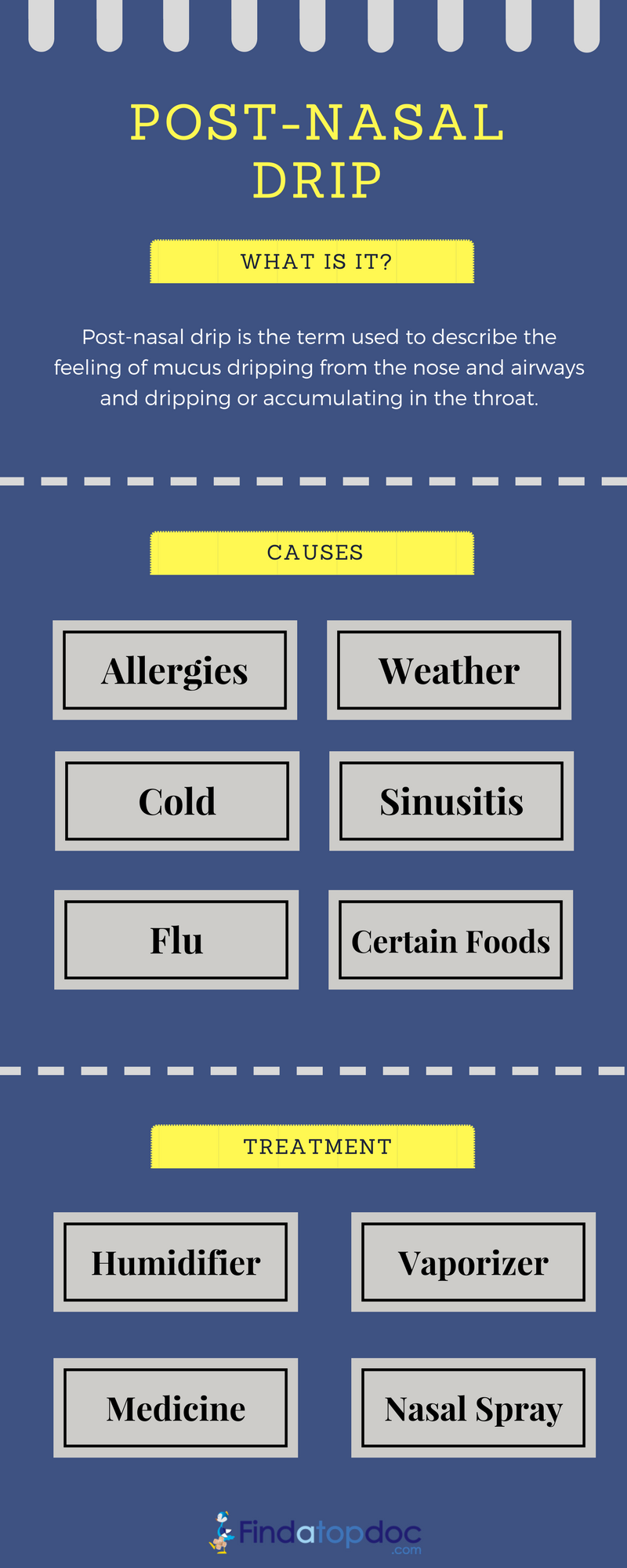
Postnasal drip is a common occurrence, affecting almost everyone at some point in their lives. The glands in your nose and throat continually produce mucus to: fight infection, moisten nasal membranes, filter out foreign matter You typically swallow the mucus without even realizing it. When your body starts producing extra mucus, you might feel it accumulate in the back of your throat. You may also feel it dripping down your throat from your nose. This is called postnasal drip.
Causes
"Post-nasal drip is one of the most common complaints that we see in our practice," says Robert W. Dolan, MD, an ear, nose, and throat specialist at the Lahey Clinic in Burlington, Mass. "Post-nasal drip is not a disease. It is a description that people use to describe the sensation of a lump or thickening in the throat." The mucus glands in your throat, nose, and sinuses are constantly making mucus. They can produce up to two quarts of mucus every day. Normally you swallow the mucus without even noticing it. Mucus is important because it cleans and moistens your upper airway and helps prevent infection. When the mucus becomes noticeable and annoying, we call it post-nasal drip.
"The sensation of post-nasal drip is not usually caused by an increased amount of mucus coming from your nose or sinuses," says Dr. Dolan. “It is more likely to be caused by the mucus becoming too thick or by irritation of your throat. In my experience, the three most common causes are allergy, gastric reflux, and medications that cause dryness.”
Prevention and diagnosis
"Asking how to prevent post-nasal drip is like asking how to prevent pain," says Dolan. “It all depends on finding the cause. In most cases the cause can be diagnosed when the primary care doctor does a history and physical exam.”
Post-nasal drip may become worrisome if it is accompanied by symptoms such as persistent cough, severe stuffy nose, recurrent infections, blood tinged mucus, or voice changes. "In severe or persistent cases of post-nasal drip, a patient may be referred to an ear, nose, and throat specialist," explains Dolan.One exam that a specialist may perform, especially if there is chronic cough, gastric reflux, or voice change, is a fiber optic exam. This exam uses a thin, lighted microscope to look at the nose, throat, and vocal cords. Depending on the diagnosis, possible treatments include:
- Antibiotics for bacterial infections
- Oral medications and sprays or allergy shots for allergies
- Antacid medications for gastric reflux disease
- Surgery for chronic sinus disease
"Mild cases of post-nasal drip, without other symptoms, may be helped by over-the-counter medications," advises Dolan. “These include antihistamines, decongestants, and mucus thinners. If these and other home remedies don't help, a visit to the doctor is the next step.”Here are some simple home remedies you can try:
- Drink plenty of fluids.
- Take a long, hot shower.
- Use an over-the-counter saline nasal spray.
- Gargle with salt water.
- Use nasal irrigations made with water and salt or baking soda.
Post-nasal drip is a common complaint and is frequently accompanied by other symptoms such as stuffy nose, sore throat, and cough. When simple measures like over-the-counter medications and nasal irrigations don't work, talk to your doctor. Common causes such as infection, allergy, and gastric reflux can often be treated successfully.


